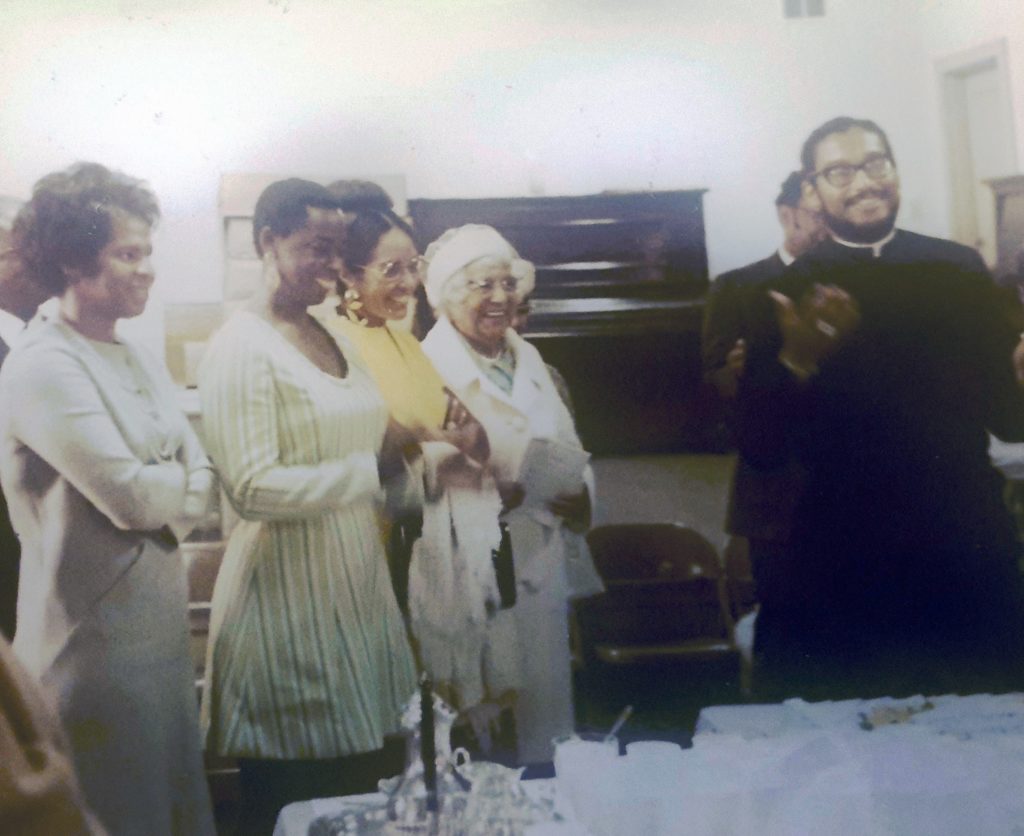St. Augustine’s Episcopal Church
Note: St. Augustine’s dates back to 1910; the building at 27th and West was constructed in 1920. St. Augustine’s later merged with Trinity Episcopal Church. Today the combined congregation meets at the red church building at Telegraph Avenue and 29th St. with the St. Augustine’s name.

Father Earl Neil was no stranger to conflict when he came to Oakland in 1967 to serve as the Rector of St. Augustine’s Episcopal Church. Originally from Minnesota, Father Neil was the only Black student in his seminary class and constantly had to challenge racism in the church hierarchy throughout his early career. As the Civil Rights movement gained steam, Father Neil utilized his role as a religious leader to participate in Mississippi’s “Freedom Summer” and Rev. Martin Luther King Jr.’s March on Selma. The horrific brutality unleashed during these historic events convinced Father Neil that Black people had the right to defend themselves.
Soon after arriving in Oakland, Father Neil established himself as the spiritual advisor to the Black Panther Party. This relationship started when Ruth Beckford, a member of St. Augustine’s congregation and a renowned Afro-Haitian dance instructor, invited Father Neil to visit Huey Newton in Alameda County Jail, where he was facing murder charges for a deadly shootout with Oakland Police. Neil’s friendship with Newton led to the Black Panther Party using St. Augustine’s as a meeting place. As the bonds between the Party and the congregation deepened, Beckford and Neil worked with Panther co-founder Bobby Seale to establish the Panthers’ first Free Breakfast Program here to serve the students of nearby Durant Elementary School.

Press play ▶ below to hear Father Earl Neil discuss the role that the Panthers played in this community, how he and Panther leader David Hilliard stopped the police from raiding the church, and why FBI director J. Edgar Hoover saw the Party’s “Survival Programs” as a threat that needed to be crushed.
Although some members of St. Augustine’s congregation were hesitant about their church becoming the spiritual home of a revolutionary organization, many of these concerns were alleviated during a joint memorial event for Rev. Martin Luther King Jr. and Bobby Hutton, a young Panther who was gunned down by Oakland police near DeFremery Park shortly after Rev. King’s assassination. This tragic occasion united the Panthers and the congregation not only in grief, but also in reinforcing the common goal of Black liberation. Tragically, this building would end up hosting several funerals for Black Panthers during Father Neil’s tenure here, as the heavy hand of law enforcement cracked down on the Party. Jonathan Jackson’s memorial service was held here in 1970 and his brother George’s followed one year later.
Written behind bars, Soledad Brother made George Jackson one of the most influential voices of his generation and his murder by prison guards during an alleged escape attempt resulted in a massive outpouring of anguish. So many mourners came to pay tribute that while Father Neil, Huey Newton, Bobby Seale, Elaine Brown and others eulogized Jackson within the walls of St. Augustine’s many thousands more gathered in these streets to offer their respects. Press play ▶ below to hear Father Neil remember the “sea of humanity” that converged on this neighborhood to celebrate the life and legacy of George Jackson in August 1971. This clip also includes archival audio of Black Panthers co-founder Bobby Seale discussing the Party’s response to Jackson’s death.

Bonus clip: When Elaine Brown was the editor of the Black Panther Party’s newspaper, she visited George Jackson in San Quentin Prison shortly before his death. Although George was heavily shackled with chains during that meeting, Brown remembers him as possessing a great amount of dignity and determination. Press play ▶ to hear Elaine Brown discuss how she worked with George Jackson’s mother to arrange the funeral here at St. Augustine’s and why she remembers Huey Newton’s speech as the highlight of that tragic day.
